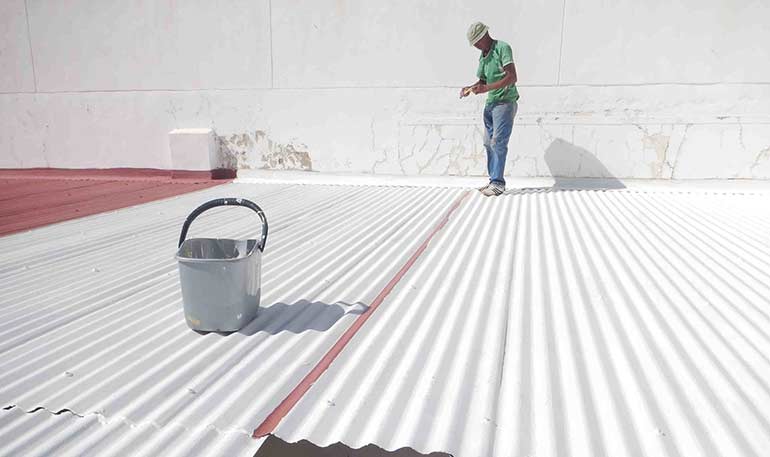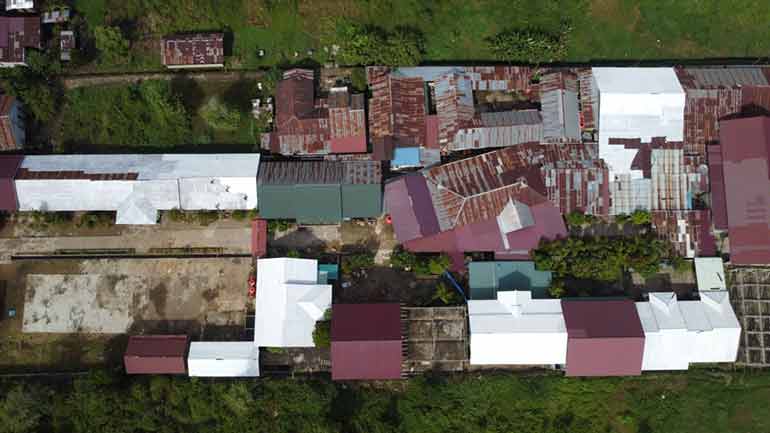Indonesian team rises to cool roof challenge
1st March 2022
USA/INDONESIA: A team from Indonesia has won $750,000 as the winner of a global competition to scale the use of solar-reflective “cool” roofs in developing countries suffering from heat stress.
Cool Roofs Indonesia, a partnership of Universitas Pendidikan Indonesia (UPI), Tangerang Municipality, University of Florida, and Milenium Solutions USA, was selected from 10 finalists for demonstrating the best sustainable and transferable model for the rapid deployment of cool roofs.
The group ran a pilot project deploying cool roof materials on six residential, community, and public buildings in the Tangerang municipality of Indonesia. Building on the knowledge gained from the pilot project, the team deployed cool roofs in other locations within Indonesia, measuring as much as a 10ºC reduction in temperature on some installations.
The Million Cool Roofs Challenge was launched in 2019 as a project of the Clean Cooling Collaborative, a philanthropic initiative to make climate-friendly cooling accessible to all, in collaboration with the Global Cool Cities Alliance, Sustainable Energy for All (SEforALL), and Nesta Challenges.

“Lack of access to cooling is deadly and a problem for more than one billion people worldwide. We need to meet the rising demand for cooling with more climate-friendly and equitable solutions,” said Noah Horowitz, director of the Clean Cooling Collaborative. “The Million Cool Roof Challenge showcased the global potential to scale cool roofs, which make buildings more comfortable for their occupants and reduce the incidence of heat stress.”
Ten finalists
$125,000 grants were awarded to 10 finalist teams based in Bangladesh, Côte d’Ivoire, Indonesia, Kenya, Mexico, Niger, Philippines, Rwanda, Senegal, and South Africa. In some of these countries, the teams were the first to introduce highly solar-reflective coating to local residents, practitioners, and officials in their respective countries. Collectively, they installed over 1.1 million m2 of new cool roofs — an area equivalent to 250,000 small household rooftops — in under two years, despite delays stemming from the coronavirus pandemic.
Due to the effectiveness of its project, their collaborative approach, and their plans for scaling up their work, Cool Roofs Indonesia was selected as the winning team of the Challenge, receiving $750,000 in addition to its £125,000 grant as a finalist.
During the Challenge, the team installed cool roofs on 70 buildings across 15 cities in Indonesia, including 36 low-cost housing units, 10 schools, two factories, and one orphanage. In total, the team estimates that 10,250 people will benefit from the newly installed cool roofs.
At one industrial site, indoor temperatures were said to have dropped by 10.7°C (from 40°C to 29.7°C) following the application of the cool roof coating. And at an elementary school, indoor temperatures were reduced by around 3°C (from 36°C to 33°C).
“To bring cool roofs to Indonesia, we had to address barriers to adoption, including the performance of the materials in a tropical climate, a lack of awareness of cool paints, and resource constraints to support installations,” said Dr Beta Paramita, assistant professor, Architecture Study Program of Universitas Pendidikan Indonesia (UPI) and project manager of Cool Roofs Indonesia.
Indonesia is home to over 46.5 million people who are seen as high risk from a lack of access to cooling. Due to a combination of insecure electricity supply, poor quality housing, and unaffordable air conditioning, many within these communities will face heat stress on a daily basis. The temperature reductions being seen during the Challenge could have a significant impact on the lives of Indonesia’s lower-income communities.
What next?
During the Challenge, Cool Roofs Indonesia helped create and support over 100 manufacturing and installation jobs by establishing its own production capacity. The team hopes to boost employment opportunities further by working to scale up the local production of cool roof coatings as the program moves into its next phase. Through scaling up local production, they expect to reduce the cost of producing cool roof materials by around 20%, making cool roofs even more accessible.
As a part of their efforts to boost local production, Cool Roofs Indonesia is planning to set up the country’s first testing facility for solar reflective materials to ensure product quality and performance. They also plan to produce academic research to further highlight the importance and effectiveness of cool roofs in the Indonesian context.
The team has plans to work alongside government ministries to build on the successes of their Million Cool Roofs Challenge project and develop policy (national standards, building codes, etc) that will facilitate the continued adoption of cool roofs across the country.







